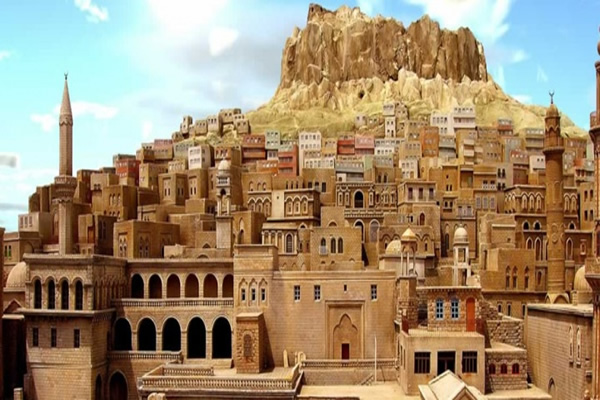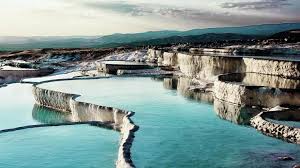
Rising in the middle of the fertile Mesopotamian plain, Mardin, on a glorious mountain slope, has been a frequent destination for all cultures passing through Anatolia. We wanted to tell Mardin, who has a history of thousands of years, when he returns to our language.
Five of love and tolerance Mardin
Which connects Anatolia to Mesopotamia; Mardin is the city of people who have been living in the historical development of dozens of civilizations, dozens of different religions, ethnic groups and sects, living together with hundreds of thousands of years and solidarity, blending different cultures with love and tolerance and protecting their differences.
City living in peace and brotherhood
Muslim, Syriac, Yakubi, Keldani, Nasturi, Yezidi, Jewish, Kurdish, Arab, Chechen, Armenian and many other diverse and ethnic communities; They lived together in “peace and brotherhood” with “social tolerance and compromise” in Mardin. Because of these features, the city has created a “peaceful synthesis of different cultural structures”.
Even if the civilizations change, the city’s name does not change
The name of the city is called “Marde” in the sense of the Assyrian capital city. The Romans called ‘Maride’ from the Assyrians, and the Arabs called ‘Maridin’. According to Plinus, it was from the Arab tribe named Mardanî, who lived around Nusaybin. Prokopios, the famous writer of the Middle Ages, named the city as Margdis as a castle-city. According to Byzantine writers, the name of the city was Mardes. According to other sources Persians Marde, Armenians Mardi, said. In most sources; Mardin’s real name is “Merdin”. Most of the people today say that to their cities.
Timur burning trees
Mardin, located on trade routes and war routes like Silk Road, has always been an important city throughout history. Persians in the early ages, then the city under the rule of Alexander the Great and the successors of the city remained in the hands of Roman and Byzantine for many years and joined the Ottoman territory after the Çaldıran War. During the Anatolian campaign, Timur burned all the trees in the skirts of the city, which he surrounded for two months and could not capture! The Mardin Castle was built by the Byzantine Emperor Constantine to defend the city against attacks by the Sassanids.
Come back come back to the village
Although an extension of the famous Baghdad Railway that was built by the Germans in the recent past is rubbed in front of Mardin and exploded in tourism, the city is one of the most emigrants of the Southeast … Unfortunately …
Religious mosaics city
Mardin is also very rich in theology. This religious mosaic was formed by no religion dominant in the city. So those who adopt a belief system have never bothered others. Different religious communities have engaged in social and commercial relations as well as marrying each other, and these kinship ties have also softened the environment. Thus, there was no dominant religion in Mardin.
City of 5,000
The city, rising in the middle of the fertile Mesopotamian ovens, clad in a mountain covered with limestone and lava, is a place frequented by almost all cultures. It’s 3,000 years old. Mardin’s first guests are: Subaras, Sumerians, Akkadians, Hittites, Midian from Iran. Later on, Assyrians, Urartians, Mitannis, Aramais, Persians …
From Alexander the Great to the Republic of Turkey
Two thousand years later, Alexander the Great and the first Christians, II. The Romans, Sassanians in the century, the Byzantines and the Arabs came immediately afterwards. XI. Turkmen who migrated to this land in the century, XII. Ayyubîs followed the swords of the Artukis and the Crusaders in the 19th century. Then Ilhanlılar. Karakoyunlu and Akkoyunlu principals and XVI. In the centuries we see the Safavids and finally the Ottomans in the territory of Mardin.
Stairs and abbars
When you climb up from the main street of Mardin, you have a narrow, damp tunnel. It is in a sense that you feel safe in these shortened tunnels, which pass under the windy terraces and link the streets and are called ‘abbara’. When you climb up and down the stone steps, you are just like Mardinian children …
Southern necklace silver necklace
Mardin stands like a glamorous necklace made by a master hand around the castle reminiscent of a gigantic ringstone on the shore of the Diyarbakır Basin. There is a palace dating from the Akkoyunlu State in the castle built by Hamdan in 975. Today the castle is also used for paragliding jumps. When you look through the embroidered windows of the stone mansions, the madrasa, dergah and churches that follow the infinity of Mardin Ovas stretch out in front of your eyes.
The most mystical city of the East
Carrying the medieval elegance day by day, Mardin owes the silhouette of the stone houses to Syrians and the stone workmanship to the Armenian master. At a Mardin house you will be welcomed by embroidered heavy furniture, glassed cabinets, hunts, jugs and giant mirrors. Even Mardin people may encounter with a “Halil Ibrahim Sofrası” as a hospitality example

